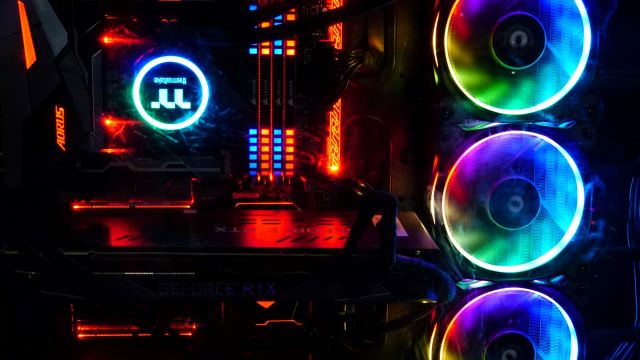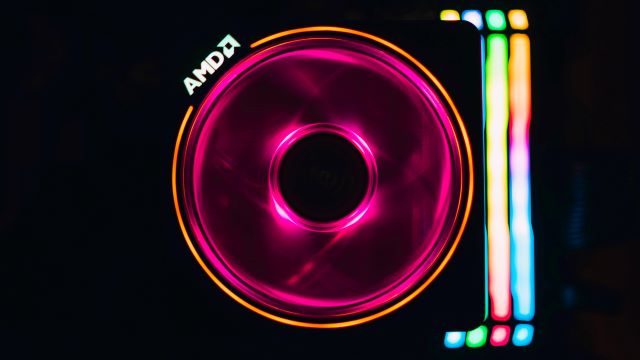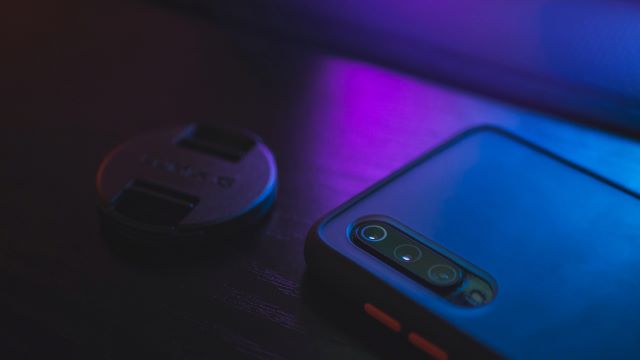If the question is ‘Why can’t RGB LED produce pure white light?’ then the answer is very much scientific. If you are a student of science, hopefully, you will understand easily. If not, no problem, we will explain simply for you as well.
At first, we should learn how the RGB LED actually works. Then we will go through the definition and scientific explanation of ‘Pure White Light’ so that you can understand easily. If you want just a simple answer, jump to the section called ‘Don’t know science? Learn simply’ from the table of contents. So let’s get started.
Table of Contents
How RGB LED actually works? A scientific explanation
RGB LEDs work based on the principles of semiconductor physics and the phenomenon of electroluminescence. Here we are trying to give a scientific explanation of how RGB LEDs actually work for you to have a clear idea for the next.
Structure of LED: An RGB LED consists of a semiconductor chip, usually made of a compound like gallium nitride known as GaN in consumer electronics, sandwiched between two layers of differently doped semiconductor material.
Band Gap and Energy Levels: The semiconductor chip has specific energy levels called the valence band and the conduction band, separated by a band gap. You learned this in school. This is basic science. The electrons that are in the valence band are in a lower energy state, while the conduction band represents a higher energy state. This band gap determines the energy required for electrons to transition from the valence band to the conduction band. See the attached photo to have a clear concept of the band gap.
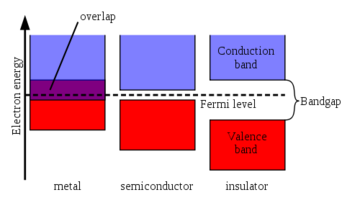
Doping: The semiconductor layers on either side of the chip are doped with impurities to create regions with excess electrons (n-type) and regions with an excess of “holes” (p-type), which are vacancies for electrons. Observe the photo attached below.
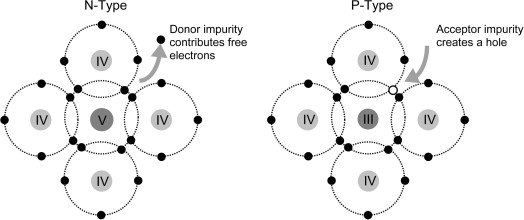
Junction Formation: When the n-type and p-type regions come together, a p-n junction is formed. This junction acts as a barrier that controls the flow of electrons and holes.
Injection and Recombination: When a voltage is applied to the LED, electrons from the n-type region and holes from the p-type region are injected into the junction. The injected electrons and holes recombine at the junction, releasing energy in the form of photons.
Photon Emission: RGB LEDs emit light by a process called “photon emission.” Inside the LED, there are special materials that produce light when electricity passes through them. As they have only 3 colors, when the electricity flows through the LED, it excites the atoms. This makes them release energy in the form of photons. We know that photons are tiny particles of light. The color of the light depends on which material is being excited.
Control of Light Output: By varying the current levels for the red, green, and blue chips, a wide range of colors can be produced. Mixing the intensities of these primary colors gives a huge number of color combinations.
Now it is time to learn about the pure white light.
What is ‘Pure White Light’? A Scientific Explanation
Pure white light is a form of light that contains a balanced combination of all visible wavelengths within the electromagnetic spectrum. It appears as a neutral, colorless light that is not biased toward any particular hue or tint.
In scientific terms, white light is often associated with a continuous spectrum, meaning it contains all colors from red to violet in a smooth and uninterrupted progression. When all these colors blend together, they create white light.
How can we achieve pure white light? Okay, we can achieve it in different ways. The most used and natural method is the use of a light source that emits a broad spectrum of wavelengths in the visible light range. And it is the best method of having pure white light. For example, natural sunlight contains a full spectrum of colors, and when combined, what do we get? We get pure white light.
Another approach to achieving pure white light is by mixing different colored lights in the required proportions. This is the method we should understand to get the answer to the question ‘Why can’t RGB LED produce pure white light?’ If we want to get pure white light from the RGB model, then we need to have all three colors at their maximum intensities. Then why it is said that RGB LED can’t produce pure white light? We will have the answer soon.
If you have confusion still, then watch the attached video. Hopefully, it will give you an idea simply.
Then, Why can’t RGB LED produce pure white light?
We already learned about the band gap, energy levels, and doping of semiconductors. We learned how the photon is missed and how the light output can be controlled. All this we learned first and then we learned what a pure light is. While learning that, we also got an idea on ‘How we get white light from RGB model?’ It was mentioned there that if we can have all these three colors at their maximum intensities, we will get pure white light. This is the method of mixing.
So it seems like everything is okay. Then why we do not get pure white from RGB though we get white light from RGB? Because it is not possible to have all these three colors at their maximum intensities while color mixing. The color spectrum of an RGB LED is limited to specific wavelengths of these three primary colors. They do not cover the full spectrum that is needed to have pure white light.
The RGB color space has a narrower range of colors compared to a dedicated white light source. The absence of a dedicated white LED within the RGB configuration means that there may be gaps or imbalances in the color spectrum, resulting in a tinted or slightly off-white appearance. This off-whiteness also depends on the manufacturers, LED models, setups, etc.
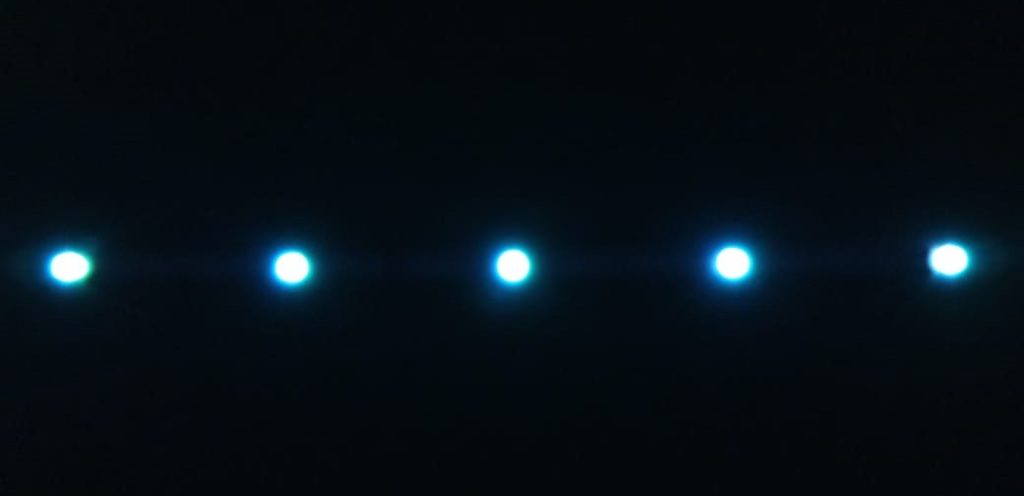
Read More: Can RGB LED make yellow?
Don’t know science? Learn simply why can’t RGB LED produce pure white light
To explain simply, saying that RGB LEDs cannot produce pure white light because they use only three primary colors to make all the other colors. When we mix these three colors together at their brightest intensities, we get a light that looks white, but it’s not the same as pure white light.
Pure white light is made up of all the 7 colors we observe in the rainbow, like the sunlight or a regular light bulb. RGB LEDs can only create colors by combining red, green, and blue, and they have limits on the colors they can make. So, when they try to make white light, there remains a small tint or color from the three primary colors mixing together, making it slightly off-white as we saw in the photo above.
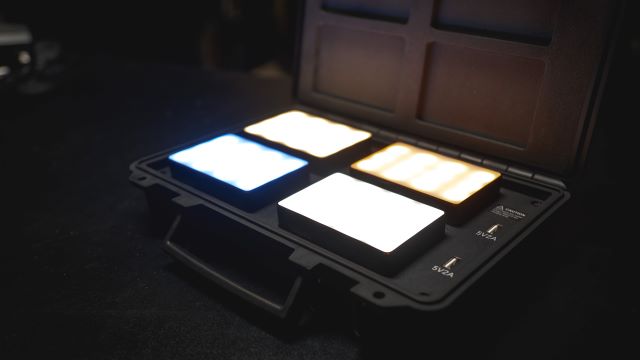
Is it impossible to get pure white light from RGB LED?
Okay. We already learned that it is challenging for standard RGB LEDs to produce a perfect or pure white light. But do you know that it is not impossible? It is possible to achieve a close approximation of white light using RGB LEDs than regular. It needs advancements in LED technology and the use of additional components but it is possible to improve the quality of white light produced by RGB LEDs. It can be achieved by using a dedicated white LED with RGB diodes. And it is the best option. This is called RGBW (Red, Green, Blue, White).
RGBW is a color model that has an additional white diode in it to give a pure white light as far as possible. These RGBW LEDs are normally used where accurate color representation and a broader color spectrum are required. Demand for RGBW is now rising every day.

Actually, I am a student of Textile Engineering. I love playing games and RGB components. Besides, I used to sell various RGB products. So I have some ideas and experiences. Here I am to share mine with you through RGB For Gamers.


